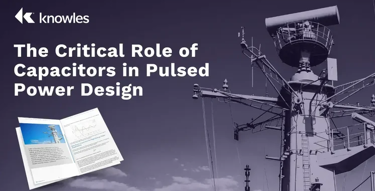The Critical Role Of Capacitors In Pulsed Power Design

Pulsed power systems, used in applications ranging from pulsed lasers to experimental fusion reactors, require rapid, precisely controlled bursts of energy. Unlike continuous power supplies, these systems depend on capacitors’ unique ability to charge gradually and then discharge in microseconds, enabling the delivery of immense power in tightly defined timeframes.
The ebook The Role of Capacitors in High-Energy Pulsed Power Systems explores the science, design, and application of capacitors in these demanding environments. Beginning with pulse fundamentals, it explains how RLC circuit dynamics—including damping ratios and time-domain responses—shape pulse characteristics. Capacitor-specific parameters such as equivalent series resistance (ESR) and equivalent series inductance (ESL) are highlighted for their critical impact on pulse fidelity and system performance.
Key design considerations are examined, such as calculating and balancing energy density, power density, and thermal behavior to ensure reliability in high-repetition-rate systems. Space and voltage constraints, along with long-term stability, play a major role in selecting the right capacitor for each application.
The ebook also covers advanced system architectures, including capacitor banks, Marx generators, and pulse forming networks (PFNs), which are designed to multiply voltage, control waveform shape, and deliver accurately timed energy bursts.
Real-world examples illustrate these principles in action, from fusion experiments at the U.S. National Ignition Facility to defense systems simulating electromagnetic pulse (EMP) effects. With decades of expertise, Cornell Dubilier and Knowles provide proven capacitor technologies to optimize performance, reliability, and safety in pulsed power applications.
Get unlimited access to:
Enter your credentials below to log in. Not yet a member of Med Device Online? Subscribe today.
